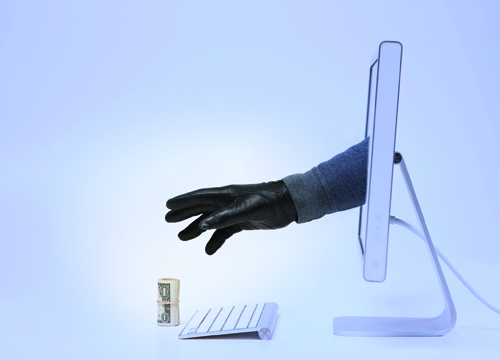What will loss prevention look like in 25 years?
General
What will Loss Prevention look like in 25 Years?
Last week I made a few predictions about the future of retail by analyzing current technologies and trends. For this week’s post I’m taking some of those predictions and looking at their impact on loss prevention. Just like anything else in this world, loss prevention is bound to change and adapt over the next 25 years.
Shoplifting is replaced by Digital Fraud
My first prediction for the future of retail loss prevention is a bold one, and it is that shoplifting will become a thing of the past. I’m willing to bet that I have already lost some people reading this because of that one statement, but for those of you still reading hear me out. I’ve already made the prediction that brick-and-mortar stores will make the transition into showrooms over the next 25 years, and if you take all of the precautions to secure the items in your showrooms then there is nothing left to steal for the folks with sticky fingers. On top of this, there are already technologies coming to the forefront that reduce the risk of physical theft and fraud. In place of shoplifting, digital fraud will become the new top source of external shrink. As a loss prevention professional you will need to focus much more of your time protecting your digital assets, rather than your physical ones. People may no longer be able to walk into your stores and take something, but that doesn't mean they can’t go on your website and do something they aren't supposed to.
Internal Fraud is Still a Big Issue
Depending on who you ask, losses caused by internal theft and fraud currently account for about 42-46 percent of all losses in retail. Some may argue that the development of new technologies over the next couple of decades will help this number dip to historical lows. However, I’m in the camp that thinks internal shrink will remain at their current levels, if not get worse 25 years from now. My main thinking behind this is that employees will still be involved in the transaction process…to an extent. Their role will become more like present day self-checkout attendants, overseeing the transactions that take place at self-service kiosks and digital storefronts. While employees may no longer be directly involved in the transaction process they can still void items, key in incorrect items, and perform other forms of fraud from their “oversight” position. On top of this you will have a large number of employees switch to warehouse and distribution settings, which could significantly increase the risk of internal theft.
“Digital Vandals” Become a Thing
Vandals have always be a pain for retailers. Sometimes they intentionally cause losses by slamming milk cartons on the ground and pretending to fall, and other times they just try to cause an annoyance by moving items around from one rack to another. Regardless of what their original plan is, they are never fun to deal with. In the future, vandals will go digital as retailers do the same. With digital storefronts and other technologies like self-service kiosks becoming mainstream, digital vandals will find a way to manipulate your interfaces in order to create a headache for all involved. Vandals can modify input devices so they don’t work correctly, damage screens so they don’t work at all, or overload your system causing it to go down temporarily (similar to modern day DNS attacks). Digital vandals may not have the intent of stealing from you, but their actions have the potential to cause a significant amount of shrink throughout your organization. 25 years from now it will be vital to stay ahead of them and vandal-proof your assets.
Third Party Fraud becomes a Hugh Issue
As I mentioned last week, one of retails biggest challenges in the future will be to keep up with the demand for the delivery of goods. In order for retailers to keep up with this demand they will most likely end up relying heavily on third party vendors to handle delivery and distribution tasks. Now in the grand scheme of things, this may not be the worst thing in the world. Utilizing third party delivery services can be a much more efficient and cost effective way to handle delivery demand. However, for loss prevention professionals this system could pose a big shrink problem. The moment you outsource one of these services, you are bound to lose some control over the process. Whether it’s contracting out your warehouses, working with freight companies to maintain inventory flow, or hiring independent drivers to deliver goods to your customers, you will need to rely on someone who sits outside of your organizational hierarchy. To help combat the risk of theft and fraud here you need to rethink your vendor compliance rules from the ground up, and if you don’t have any I highly recommend you create some.
As we move forward into the future it think it’s fair to say that digital fraud will easily overtake physical losses. In an effort to combat the new types of fraud that we will see in the future, it is vital that all loss prevention departments have the same priority: ensure that your technology is better than the fraudsters’ technology. The cat and mouse game that has existed since the beginning of time will never go away, but there is always something you can do to help stem the tides.
Related Articles

How can Leaders Really Measure the Impact of Loss Prevention Efforts?
In LPM’s recent survey, Evolving Perception of Value within Loss Prevention Departments, diverse opinions indicate the percep...
A Brief History of Loss Prevention and Asset Protection and a Look at What's Next
From Store Cop to Strategic Advisor Not so long ago, Security Teams oversaw the protection of goods, watching for both shopl...
Remembering Gus Downing: A Loss Prevention Pioneer
It is with heavy hearts that we at Agilence mourn the passing of Gus Downing, a true luminary in the loss prevention (LP) and...Subscribe to our blog
Receive free educational resources like exclusive reports, webinars, and industry thought leadership articles straight to your inbox.


